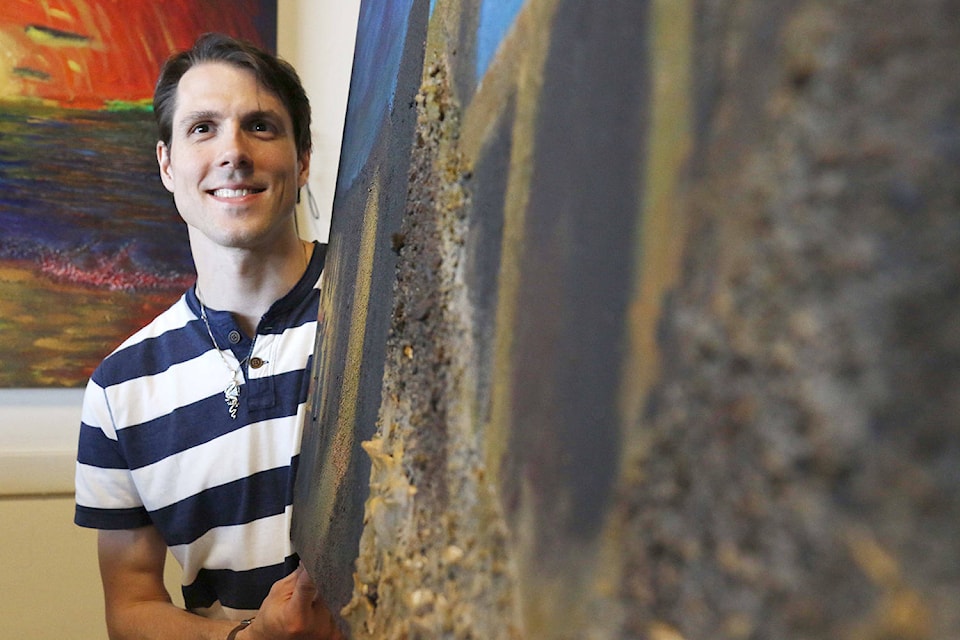A few years after Richard Harlow started to lose his vision, he began to have a recurring dream. In the dream, he was walking through a tropical forest and when he came out, he was on the beach and a beautiful sunset was unfolding before him. The waves were crashing gently on the sandy shores of the beach and he was at peace.
Years later, Harlow, a Vancouver Island University psychology and visual arts student, re-created his dream scene on canvas. The accomplishment is significant on two levels for the 28-year-old artist, actor, activist, standup comic and model. He has fulfilled his wish to get back into art after losing all of his central vision, and it also marks the beginning of a new form of art Harlow hopes will be more inclusive for the vision-impaired – art that is meant to be touched as well as seen.
“With my paintings, I’m always trying to show people that just because you have a disability, doesn’t mean you can’t accomplish anything you want to,” he said. “With my tactile art, I’m bridging the gap between people with and without vision – both are able to experience the painting and no one is excluded. In most art galleries, there are signs asking you not to touch the paintings, but with my paintings, touching is encouraged.”
In Harlow’s dream scene painting, called Vision of Paradise, people can touch the waves and feel the ripples. He mixed ground walnut shells into the paint to achieve the feeling of the sand, and the feeling of the waves rippling into shore was achieved using two types of syringes and gel paint – an idea Harlow got from volunteering at a pop-up injection site in downtown Nanaimo.
“It’s meant to be best experienced from a seated position – so someone in a wheelchair would have the best view,” he said.
The painting, one of the first Harlow has done in this new style, is currently displayed in VIU’s upper cafeteria for everyone to enjoy. Harlow’s paintings are for sale via his Blind Eye Works Facebook page. He also received a bursary through the Canadian Institute for the Blind for his accessible artwork.
Harlow first attended VIU right after graduating from Woodlands Secondary School in Nanaimo. He took visual arts classes for a couple years before transferring to Emily Carr University of Art and Design in Vancouver to study 3D and classical animation, which is when he started to lose his vision due to a rare optic nerve condition. Harlow dropped out of school and returned to Nanaimo.
In 2010, he returned to VIU, this time to take psychology courses. Since then Harlow has immersed himself in advocacy work for people with disabilities.
“The thing I really like reminding people is that having a disability is not the end – it’s the beginning of a new chapter, and it’s entirely up to you to choose how to write that story,” said Harlow.
